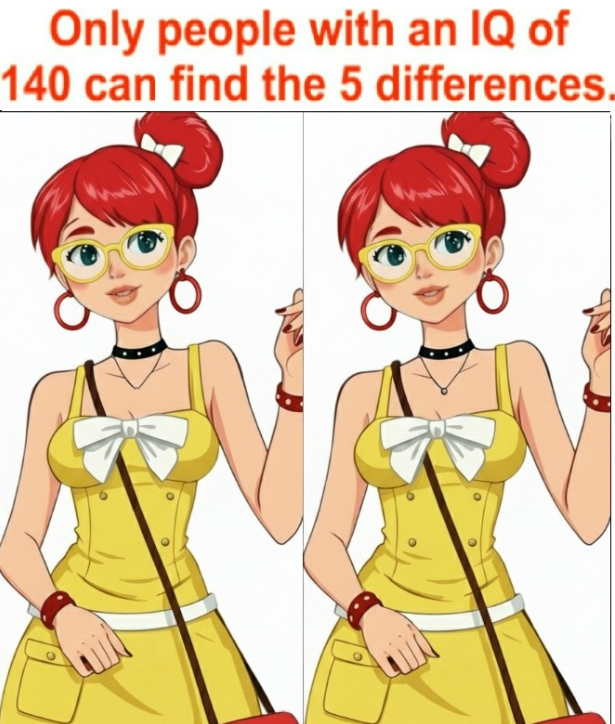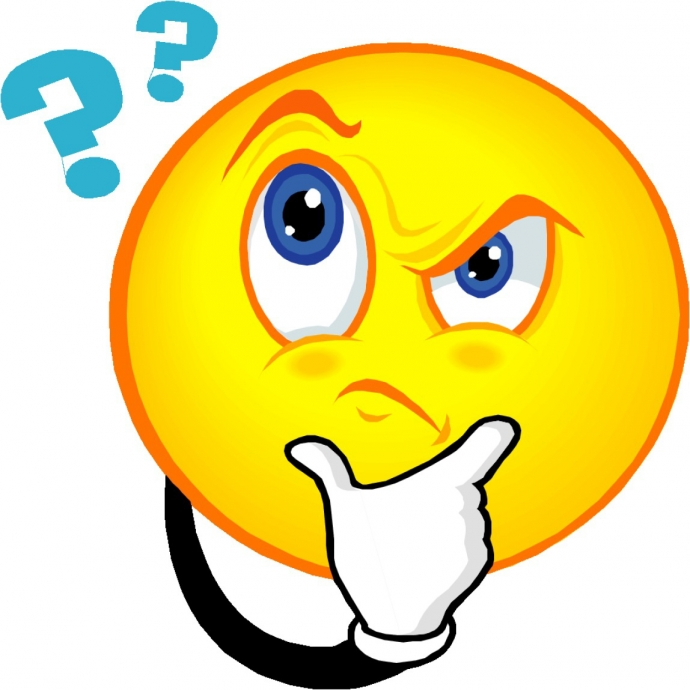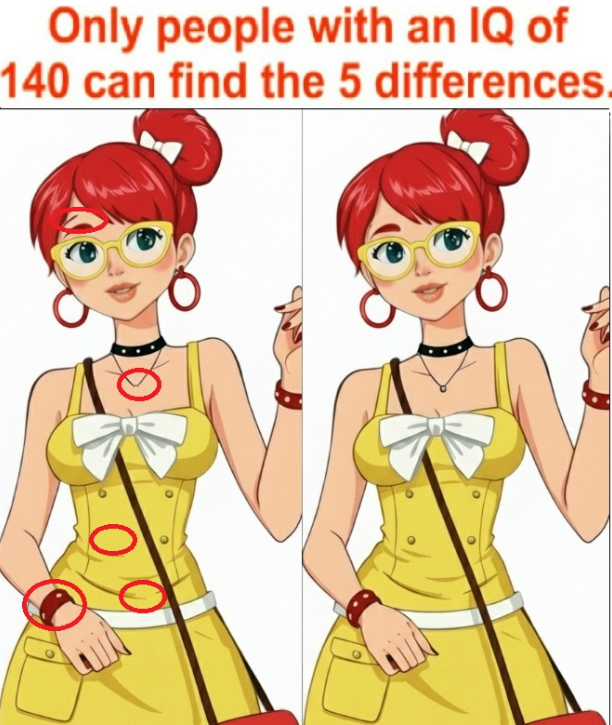If you love brain teasers that test your attention to detail, this “find 5 differences” challenge is perfect for you. At first glance, both pictures show the same stylish red-haired girl in a yellow dress: same pose, same smile, same glasses, same handbag. But hidden in the details are five small differences that many people miss, even after staring at the image for a long time.
The caption says only people with a high IQ can find all five. Is that true? Maybe, maybe not—but it’s definitely a fun way to put your observation skills to the test. So, before you read any further, ask yourself:
Can you spot all 5 differences without help?
How long do you think it will take you?
Take a moment, zoom in if you can, and really look. Then come back and see how your result compares.

Why this “spot the differences” puzzle is trickier than it looks
You might think that comparing two pictures side by side should be easy. But our brains are surprisingly lazy when it comes to details. Here are a few common mistakes people make when trying to solve this kind of puzzle:
1. They rely on first impressions
At first look, the pictures seem identical, so your brain quickly decides, “Nothing major is different.” Once that decision is made, you stop examining carefully and start skimming, which makes you miss subtle changes like a wrinkle, a button, or a tiny fold.
2. They focus only on big shapes
Most people scan major elements: the face, hair, dress, handbag. If there isn’t an obvious color change or a missing object, they assume there’s no difference. But in this puzzle, every difference is small—thin lines, a missing accessory, a tiny detail on the dress.
3. They don’t use a systematic method
Instead of scanning from top to bottom or left to right, many people let their eyes jump randomly between parts of the picture. That’s how you end up checking the same area four times and completely skipping another area that hides a difference.
4. They quit after finding a few differences
Once someone finds three or four, they feel “almost done” and start to lose concentration. The last difference is usually the smallest and most subtle, and it requires the most patience. People give up too early and assume the puzzle is unfair, when in reality they just didn’t look closely enough.
Recognize yourself in any of these habits? Don’t worry—that’s exactly what this puzzle helps you train away.
Video : I Bet You Can’t Find the 4th Object 😱
Step-by-step guide: finding all 5 differences
Now let’s solve the puzzle together. If you still want to try alone, pause here and take another careful look. When you’re ready, follow this step-by-step breakdown from top to bottom.
1. The wrinkle on her forehead
Start at the top of the picture, with the girl’s face and hair. Look closely at her forehead on the left image. You’ll notice a small curved line—a little wrinkle or strand separation—just below the hairline.
In the right image, that wrinkle is gone. The forehead looks smooth, with no line at all.
This is our first difference: the wrinkle on her forehead exists only in the left picture.
It’s a tiny detail, but it sets the tone: this puzzle is all about subtlety.
2. The necklace around her neck
Move slightly down to her neck. In the left image, underneath the black choker, there is a thin necklace with a small circular pendant resting on her upper chest. It’s delicate, but clearly visible once you notice it.
In the right image, the necklace and pendant completely disappear. Only the black choker remains.
That gives us the second difference: the necklace is present in the left picture, missing in the right one.
Accessories are common targets in these puzzles because they’re easy for the brain to ignore.

3. The waist button on her dress
Now focus on the middle of her yellow dress, around her waist. On the left image, there is a round button on the vertical seam, slightly above the white belt line. It’s small but stands out once your eyes lock onto it.
In the right image, that button is gone. The fabric looks smooth, with no button at that spot.
This is the third difference: the waist button appears only in the left image.
Buttons, seams, and stitching are classic places to hide differences because our brains quickly treat them as “background pattern.”
4. The bracelet on her wrist
Next, move down to her wrist on the hand that is resting near her hip. In the left picture, she is wearing a red bracelet with small decorative details. It’s wrapped around her wrist as part of her accessories.
In the right picture, the bracelet is still there, but its design has changed—the small highlighted detail you see in the left version is missing or looks different. Depending on how you interpret the artwork, you’ll notice a clear change in how that bracelet appears between the two sides.
This gives us the fourth difference: the bracelet on her wrist is not exactly the same in both images.
Many players spot this change quickly because the bracelet sits on a clear, light skin background, making any difference easier to see.
5. The fold on the skirt
Finally, look at the lower part of her dress, around the skirt area near the pockets and belt. On the left image, there is an extra fold or crease in the yellow fabric—a curved line that suggests a wrinkle in the skirt.
In the right image, that fold is missing. The skirt appears smoother and less detailed.
This brings us to the fifth difference: the skirt fold exists only in the left picture.

Because this difference is low in the image, many people miss it entirely. Our eyes tend to focus more on faces and upper-body details than on the lower area of the drawing.
What this puzzle teaches your brain
Solving this “find 5 differences” challenge is more than just a fun way to pass time. It quietly trains several important mental skills:
- Attention to detail: You learn to slow down and really look at each area instead of assuming everything is the same.
- Systematic thinking: Scanning from top to bottom or left to right helps ensure you don’t miss anything.
- Patience and persistence: The last difference often demands that you keep going even when you feel like giving up.
- Visual memory: As you compare the two images, your brain practices holding small details in mind and checking for changes.
These are the same skills that help you notice mistakes in documents, catch inconsistencies in stories, and stay sharp in everyday life.
Now it’s your turn: share your experience
So, how did you do?
Did you find:
- The wrinkle on her forehead
- The necklace under the choker
- The waist button on the dress
- The change in the bracelet
- The missing fold on the skirt
Be honest—how many did you spot before checking the answers? Which one gave you the most trouble? Was it the wrinkle on the forehead or the subtle fold on the dress?
Video : I bet $15,000 you Cant find the 4th Object! Hard
Tell your result in the comments, and challenge your friends to try the same puzzle. You might be surprised by who has a sharp eye for detail and who gets stuck at three or four differences.
And if you enjoyed this, keep exploring more “spot the difference” images, logic puzzles, and visual riddles. The more you practice, the more your brain learns to notice the small things that everyone else overlooks.
Next time you see a caption claiming “only people with an IQ of 140 can find the differences,” you’ll know what to do—smile, focus, and prove the puzzle wrong.